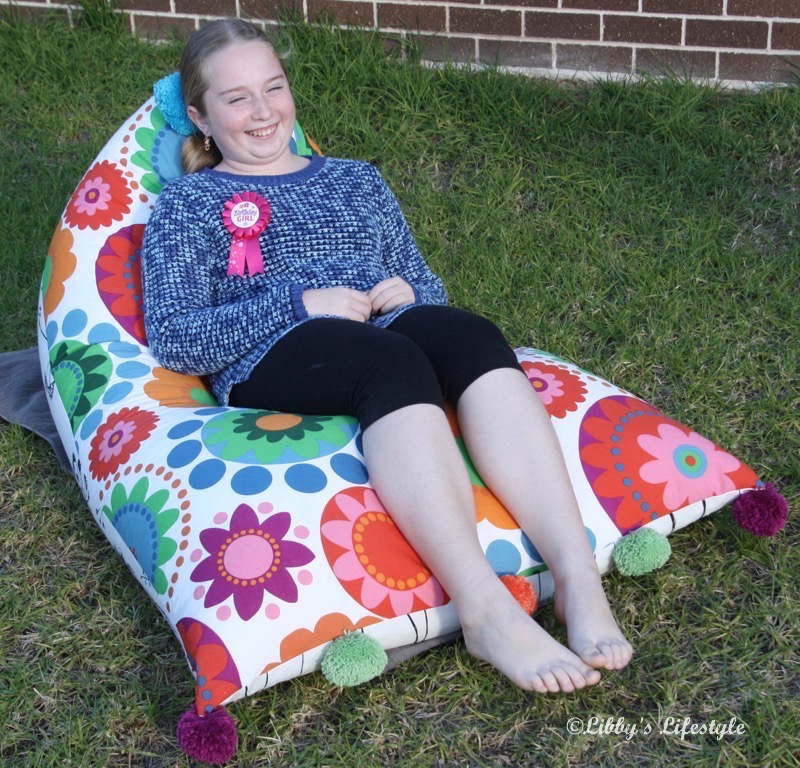Choosing the Right Materials: Easy Bean Bag Chair Diy

The foundation of a comfortable and durable bean bag chair lies in the selection of its materials. The fabric you choose will determine the chair’s feel, aesthetics, and durability, while the filling material will dictate its firmness, resilience, and overall comfort.
Bean Bag Chair Cover Fabrics
The fabric you choose for your bean bag chair cover will significantly impact its look, feel, and durability. Here’s a comparison of some popular options:
- Cotton: Known for its breathability and softness, cotton is a popular choice for bean bag chair covers. It’s generally affordable and easy to care for. However, cotton can wrinkle easily and may not be as durable as other options, especially if exposed to frequent wear and tear.
- Corduroy: This textured fabric adds a touch of sophistication and warmth to bean bag chairs. It’s known for its durability and resistance to pilling. However, corduroy can be heavier and less breathable than other options, and it might not be as comfortable for warm climates.
- Fleece: Fleece is a soft and cozy fabric that’s ideal for bean bag chairs. It’s lightweight, warm, and comfortable. However, fleece can be prone to pilling and may not be as durable as other options.
- Microsuede: Microsuede is a synthetic fabric that feels like suede but is more durable and easier to clean. It’s known for its luxurious feel and resistance to stains. However, microsuede can be more expensive than other options and may not be as breathable as natural fabrics.
Bean Bag Chair Filling Materials
The filling material you choose will determine the firmness, resilience, and overall comfort of your bean bag chair. Here’s a comparison of some popular options:
- Polystyrene Beads: These small, lightweight beads are a popular choice for bean bag chairs. They provide a comfortable, moldable feel and are relatively inexpensive. However, polystyrene beads can be noisy and may lose their shape over time. Additionally, they can be prone to leaking if the fabric is punctured.
- Expanded Polystyrene Beads: These beads are similar to polystyrene beads but are slightly larger and more durable. They provide a firmer feel and are less prone to leaking. However, they can also be noisy and may lose their shape over time.
- Shredded Foam: Shredded foam provides a softer and more supportive feel than beads. It’s less noisy and more resilient, but it can be heavier and more expensive than beads. Additionally, shredded foam can clump together over time, requiring occasional fluffing.
Calculating Fabric and Filling Needs
To determine the amount of fabric and filling you need, you’ll need to know the desired size of your bean bag chair.
The amount of fabric needed will depend on the shape and size of the bean bag chair. For a basic rectangular bean bag chair, you can estimate the fabric requirement by measuring the length and width of the desired chair and adding an extra 10-15% for seams and allowance.
The amount of filling you need will depend on the type of filling you choose and the desired firmness of the chair. For polystyrene beads, you can estimate the filling requirement by multiplying the volume of the chair by 0.8. For shredded foam, you can estimate the filling requirement by multiplying the volume of the chair by 0.6.
Constructing the Bean Bag Chair
:max_bytes(150000):strip_icc()/DropclothBeanbagChair8-50f28c97b1b2436f8aa37f8fc2159aa7.jpg)
The heart of your bean bag chair lies in its construction. This is where you bring your design to life, transforming fabric and filling into a cozy haven.
Cutting and Sewing the Fabric Panels, Easy bean bag chair diy
Before embarking on the sewing journey, lay out your fabric panels. Carefully measure and mark the fabric for each panel, ensuring accuracy for a seamless fit. The panels should be cut according to the pattern you’ve chosen, allowing for seam allowances.
When sewing the panels together, use a strong, durable thread and a stitch length appropriate for the fabric. A zigzag stitch is ideal for creating a sturdy seam that can withstand the stress of frequent use.
To enhance comfort and durability, consider reinforcing the seams with a double stitch or using a seam binding. This will prevent fraying and extend the life of your bean bag chair.
Attaching the Zipper
The zipper is the gateway to your bean bag chair, allowing for easy filling and cleaning. To attach the zipper, carefully measure and mark the opening on one of the fabric panels.
Use a zipper foot on your sewing machine to sew the zipper tape to the fabric, ensuring the zipper teeth are aligned with the fabric edge.
To ensure a secure and smooth opening and closing, consider using a heavy-duty zipper with a slider that glides effortlessly.
Creating a Comfortable Base
The base of your bean bag chair serves as the foundation for your comfort. For a circular base, cut a large circle of fabric, leaving ample seam allowance. For a square base, cut a square piece of fabric, ensuring the sides are long enough to accommodate the desired width and depth of your chair.
To create a supportive and comfortable base, consider using a thick layer of batting or foam padding. This will provide cushioning and enhance the overall comfort of your bean bag chair.
Easy bean bag chair diy – Yo, making a bean bag chair is super easy, just grab some fabric and beans, right? But if you’re feeling fancy, maybe check out the nautica beach chair walmart for a chill vibe. You can even use the bean bag chair for a comfy spot to relax while you’re browsing online for more DIY projects.
Yo, making a bean bag chair is easier than you think. Just grab some fabric, beans, and get to work. If you’re into sports, you might wanna check out New York Yankees beach chairs for the ultimate game day vibe.
But hey, if you’re chillin’ at home, a DIY bean bag chair is the perfect way to kick back and relax.
